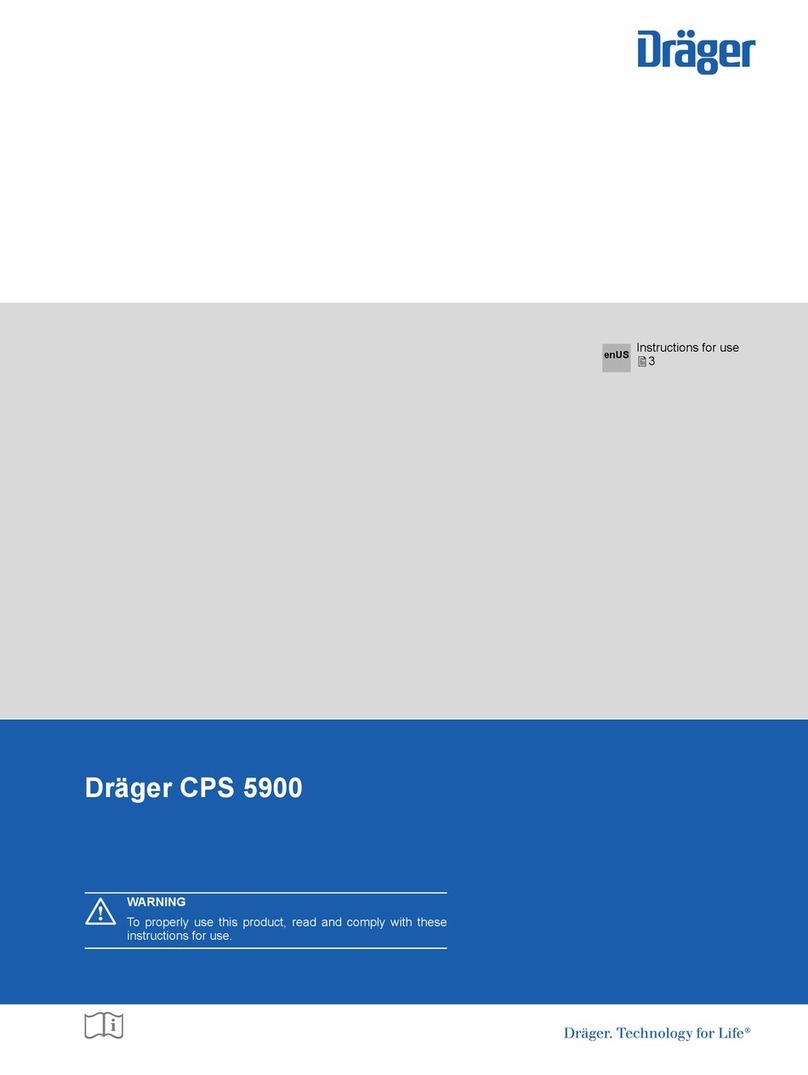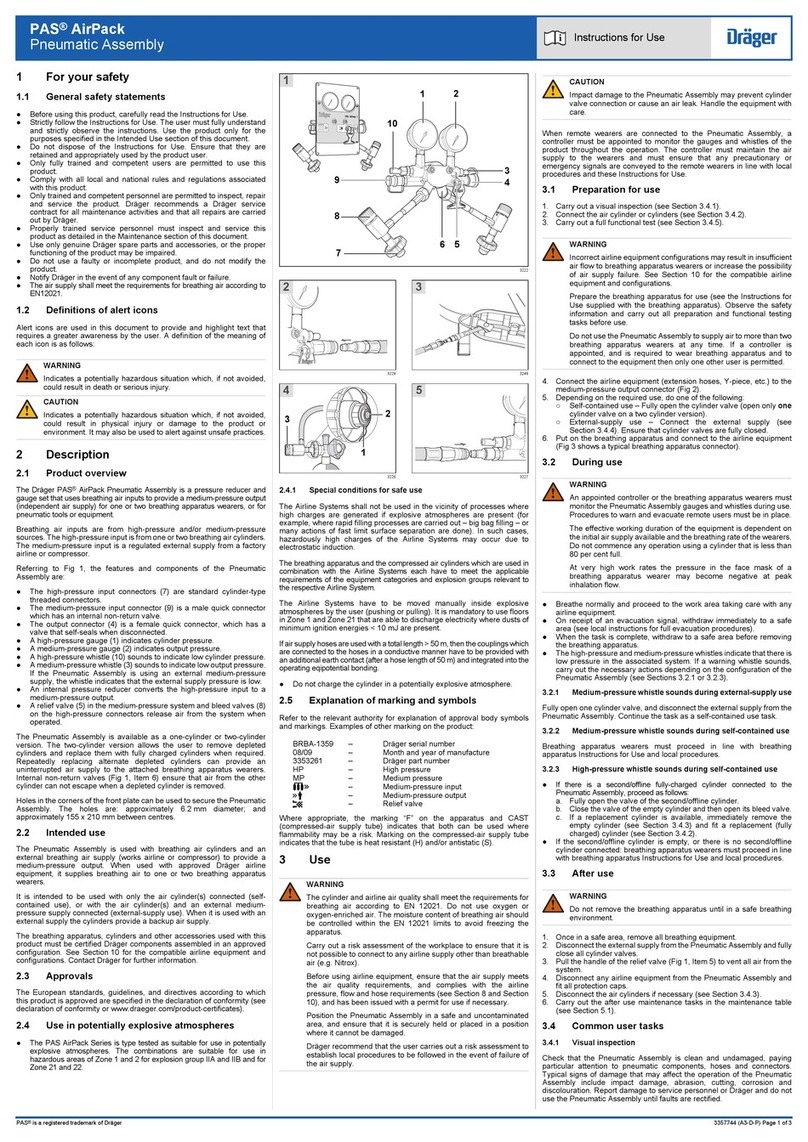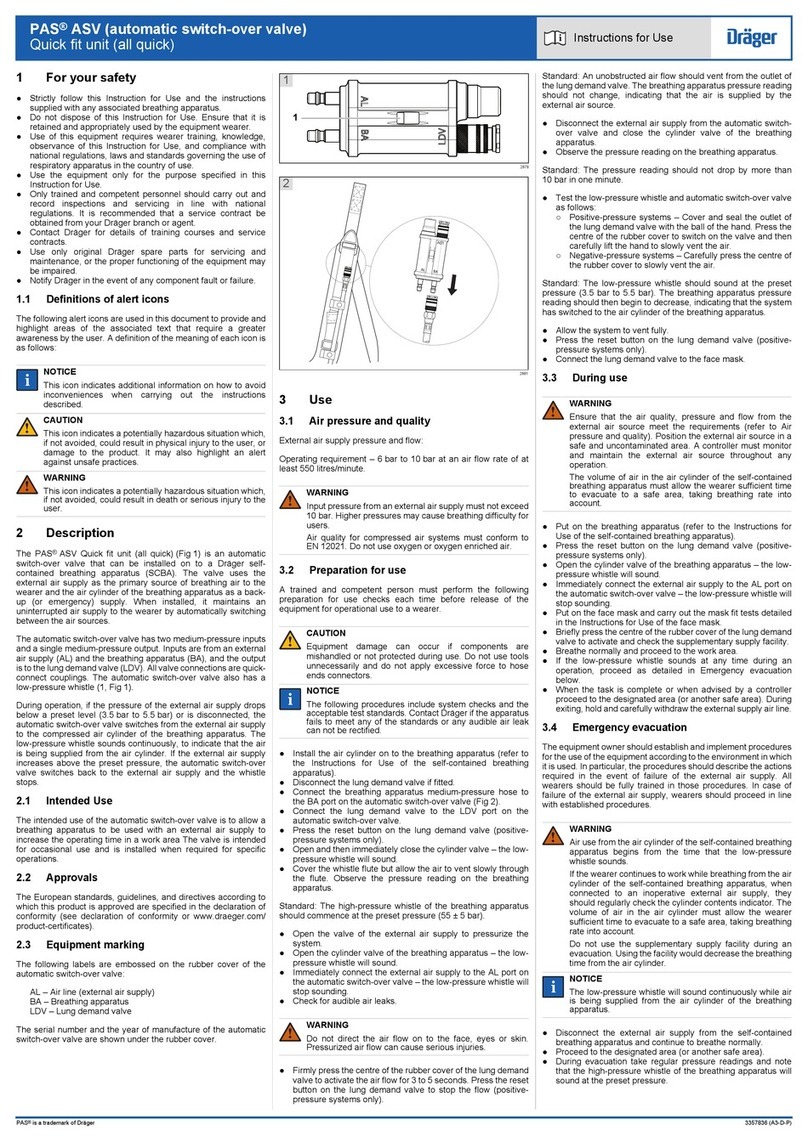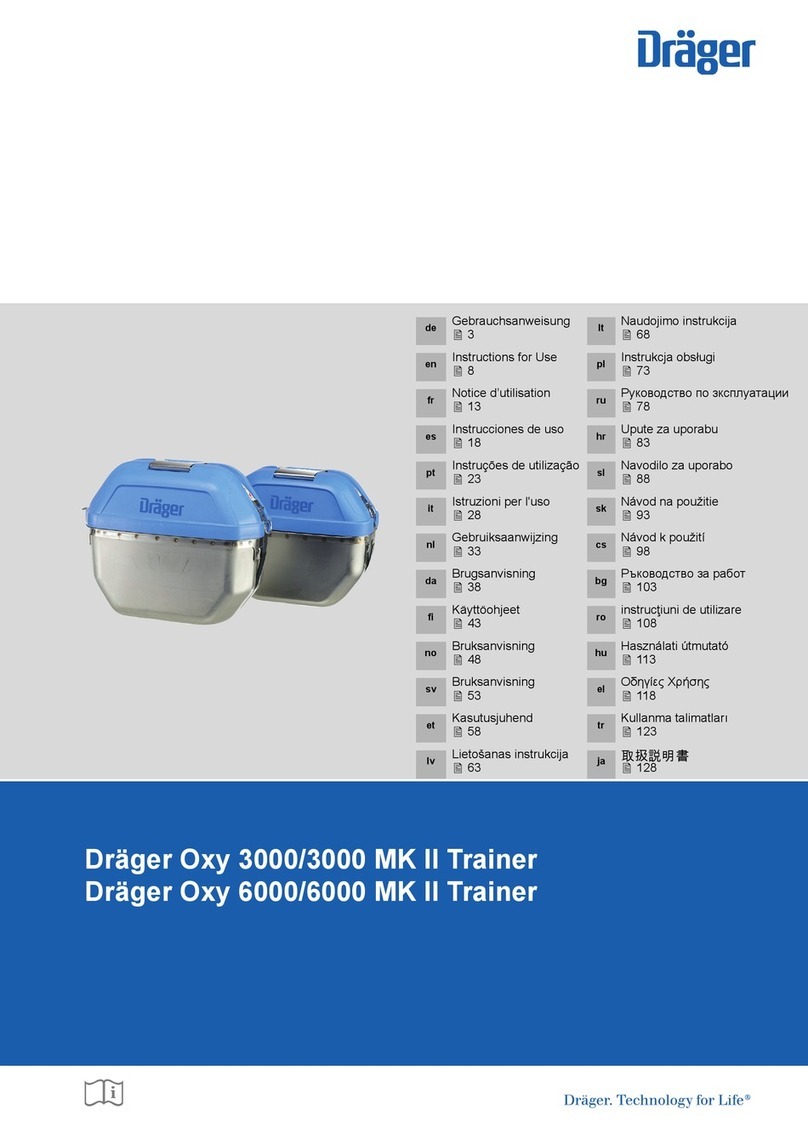
Maintenance
Instructions for use | Dräger HPS SafeGuard 5
1. Put on the fire helmet.
2. Close the chin strap.
3. Adjust the length of the chin strap at the quick-release
buckle. Fix the end of the chin strap with the hook-and-
loop fastener. The chin strap should lie evenly under the
chin.
4. Adjust the length of the neck straps using the adjusting
clamps. The neck straps should lie evenly at the neck.
5. Turn the adjusting wheel until the support ring fits snugly
against your head.
4.2.3 Taking off the helmet
1. Turn the adjusting wheel until the support ring fits loosely
on your head.
2. Open the chin strap.
3. Take off the fire helmet.
4.3 During use
The helmet does not contain any materials that are known
to cause allergic reactions. In individual cases, however,
allergic reactions could still occur in very sensitive people.
The visors may transfer physical impacts to corrective glasses
and damage them.
Full protection can only be achieved when the face protector
is locked into the lowest position.
4.4 After use
Check usability as follows:
– Check helmet shell, internal helmet components, chin
strap and accessories. Replace defective parts.
– Check visor. In case of visible damage, or impaired vision
(e. g. by scratches, discolouring), the visor should be
replaced.
– Check the paint coating of the fire helmet for damage.
The special self-extinguishing coating is the most
important factor for the thermal performance of the helmet.
Damaged coating might shorten the usage period. Small
surface scratches or damages to the paint work do not
reduce the protective effect. They can be repaired with
repair paint.
Fire helmets that are out of use, or cannot be repaired any
more must be destroyed for safety reasons.
Trained personnel or Dräger can check and decide if a
damaged fire helmet is still suitable for use or can be repaired.
CAUTION
The protective effect is reduced after impact!
If the fire helmet absorbs the energy of an impact, it can get
damaged or destroyed.
► Even if the damage is not visible at first, the fire helmet
must be replaced after a heavy bump or impact. Damaged
or impact-stressed fire helmets may no longer be used.
This also applies if no external damage is visible.
5 Maintenance
5.1 Maintenance intervals
Dräger recommends replacing the O-rings on the face
protector as required. For further information see: "Replacing
the face protector", page 6.
Dräger recommends replacing the O-rings on the adjusting
wheel every 6 years. For further information see: "Replacing
the O-ring on the adjusting wheel", page 15.
5.2 Maintenance work
The following maintenance work is normally not carried out by
the firefighter, but by service personnel.
– Replacing the neck guard
– Replacing the face-guard
– Replacing the internal helmet components
– Replacing the function plate
– Replacing the front plate
– Replacing the helmet end plate
– Replacing O-rings
– Replacing the reflective strips
– Repairing paint on the helmet shell
The photos of the helmet are examples.
5.2.1 Replacing the neck guard
Spare parts required:
– Neck guard (3702761)
1. Loosen the hook-and-loop fastener on the front adjusting
ring on both sides.
2. Pull the mounts on the rear adjusting ring to the middle of
the helmet and pull off the neck guard.
56283



















































